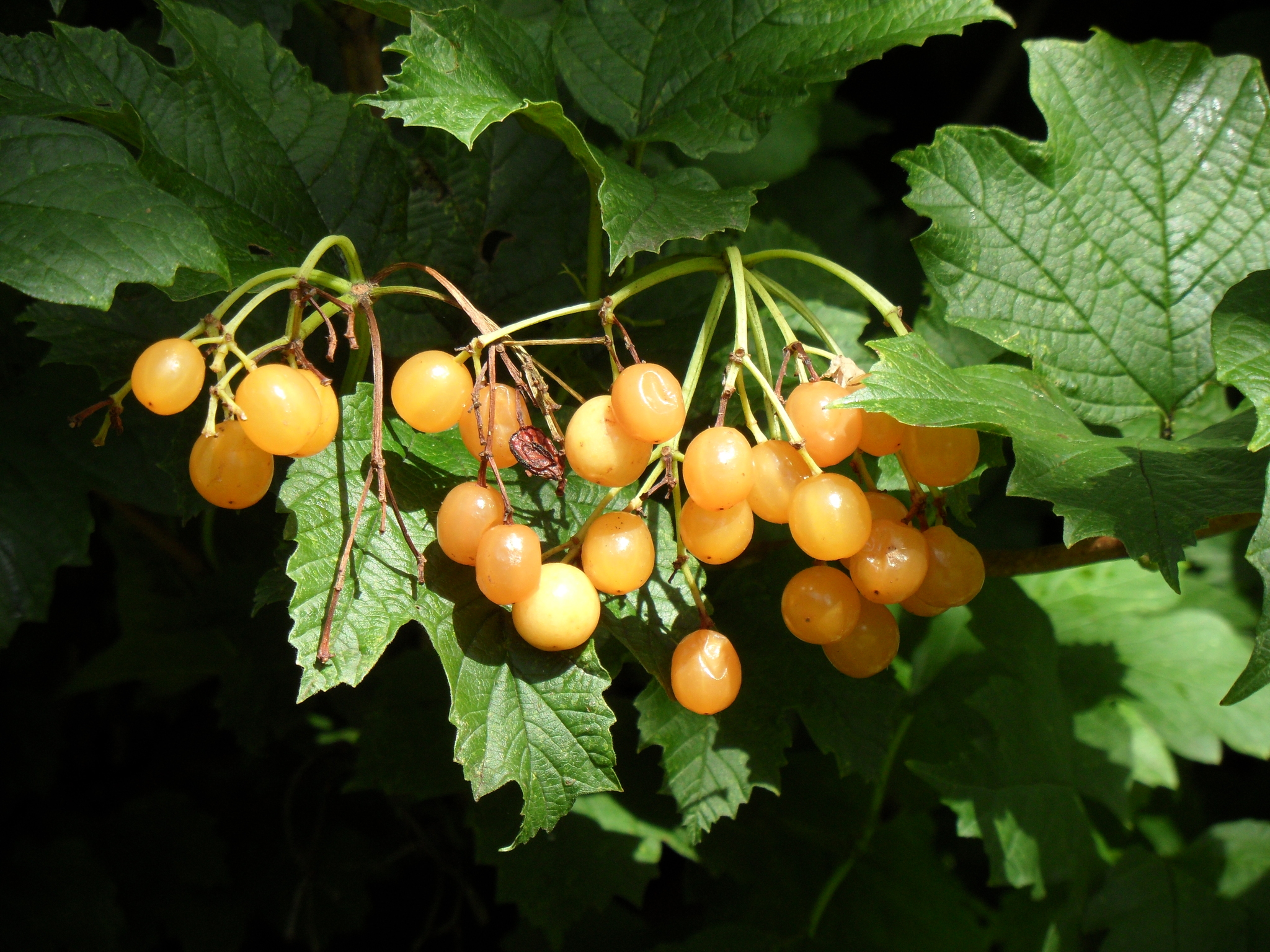
Deciduous shrub to about 4 m tall. Leaves with 3(4, 5)-toothed lobes, hairless above, hairy below; red in autumn; stalk with 2 linear stipules at the base. Flowers either small (fertile), or large and showy (sterile), white or greenish white, generally in a flat cluster but forming a ball in 'Roseum'; summer. Fruit about 8 mm wide, red.
W Asia, N Africa, Europe
V. trilobum Marsh, Cranberry Bush, is very similar but has more or less hairless leaves with only small glands on the leaf stalk;
V. acerifolium L., Dockmackie, from N America differs in having flower clusters without sterile flowers, and fruits that are purplish black.
V. sargentii Koehne from E Asia has scarlet fruits and sterile marginal flowers but is distinguished by the thick, rather corky bark and purple anthers; it is available as 'Onondaga' which has distinctively maroon foliage in autumn and fertile flowers that are deep red in bud, while 'Susquehanna' has white flowers, good autumn foliage and prominent red fruits.
Source: (2002). Caprifoliaceae. In: . Horticultural Flora of South-eastern Australia. Volume 4. Flowering plants. Dicotyledons. Part 3. The identification of garden and cultivated plants. University of New South Wales Press.

Dwarf shrub to 1 m tall and leaves to about 4 cm wide, rarely flowering.
Viburnum opulus 'Notcutt's Variety'
A robust, large-growing shrub to 4 m or so with exceptionally large fruits and more pronounced autumn colouring.
All flowers sterile and forming a greenish to white snowball-like dense head 5-6 cm wide.
This is an old cultivar dating back to at least the 16th century in Europe, possibly originating from Gelderland, Holland, and the original Guelder Rose, although the name is now applied in general to all forms. ['Sterile']
V. macrocephalum Fort. f. macrocephalum, Chinese Snowball, also originated in cultivation but in China; it too has flowers all sterile, forming a large round head 7-15 cm wide in late spring, the individual flowers more than 2 cm wide. The shrub has entire, not lobed leaves.
Viburnum opulus 'Xanthocarpum'
Fruits yellow, sometimes with a hint of apricot.
The exact source of plants under this name is uncertain but they probably originated from the Spaeth Nursery, Berlin, c. 1910.